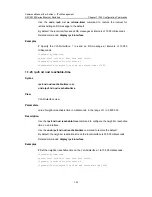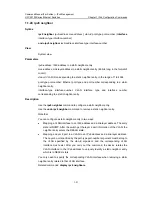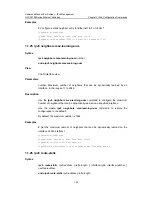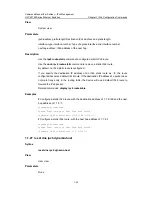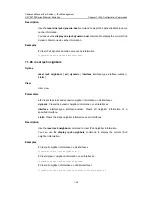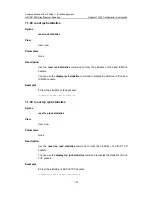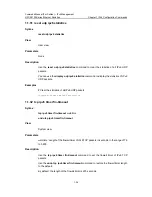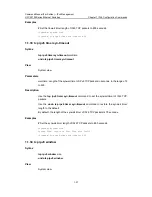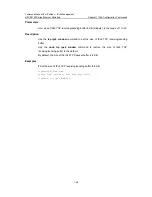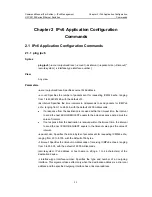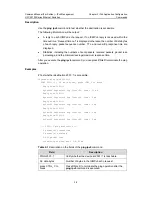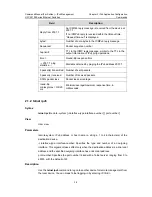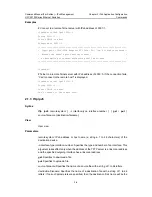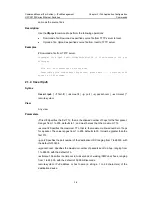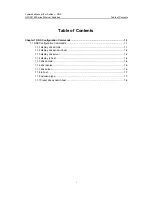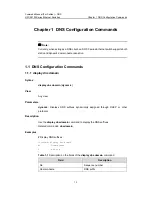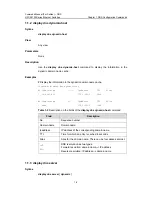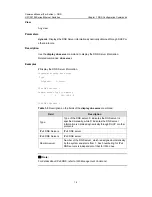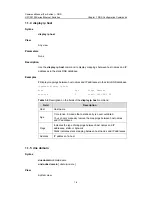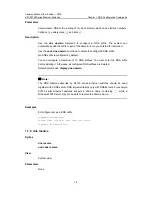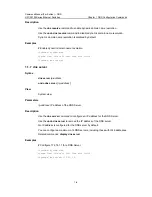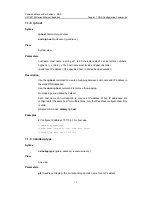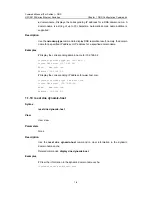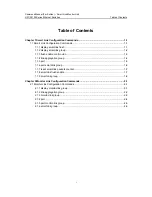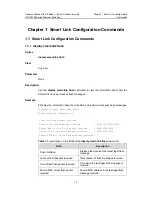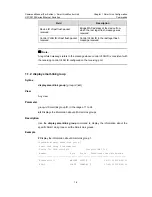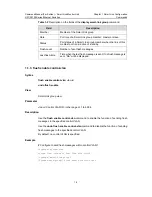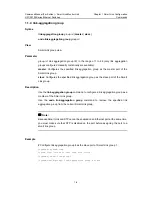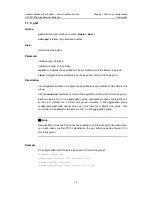
Command Manual (For Soliton) – IPv6 Management
H3C S3100 Series Ethernet Switches
Chapter 2 IPv6 Application Configuration
Commands
2-6
Description
Use the
tracert ipv6
command to trace the route of the IPv6 packets from source to
destination.
After using the
ping
command to detect a network problem, you can use the
tracert
command to locate the failed network node.
Executing the
tracert
command displays the IP addresses of all the Layer 3 forwarding
devices which forward the packets to the destination on the path; if a device times out,
“* * *” is displayed.
You can press
Ctrl + C
to terminate the tracert operation after the
tracert ipv6
command is executed.
Examples
# Trace the route of the IPv6 packets from source to destination 3002::1.
<Sysname> tracert ipv6 3002::1
traceroute to 3002::1 30 hops max,60 bytes packet
1 3003::1 30 ms 0 ms 0 ms
2 3002::1 10 ms 10 ms 0 ms
3 * * *
Table 2-2
Description on the fields of the
tracert ipv6
command
Field
Description
traceroute to 3002::1
Traceroute the device at 3002::1 to view the passed route
30 hops max
Maximum hops, which can be configured using the
-m
argument.
60 bytes packet
Number of bytes in a probe packet
press CTRL_C to
break
Press
Ctrl + C
to terminate the tracert operation after the
tracert ipv6
command is executed.
1 3003::1 30 ms 0 ms
0 ms
Probe result for sending packets with TTL 1, including
IPv6 address of the device and round-trip response times
of three probe packets.
The number of probe packets sent each time can be
configured using the
-q
argument.
3 * * *
The device three hops away has no response.

